Moveable Production Systems for Sustainable Development and Trade: Limitations, Opportunities and Barriers
Abstract
1. Introduction
2. Methodology
3. Moveable Production Systems
3.1. Moveable Factories
3.2. On-the-Job Training
3.3. Product Kits
4. Potential of Moveable Production Systems
4.1. Limitations
4.2. Opportunities for Sustainable Production
4.3. Opportunities for Sustainable Trade
5. Barriers for Moveable Production Systems
5.1. Global Production Networks (GPN)
5.2. Rentier StateTheory
5.3. Theory of Treadmill Production and Consumption
5.4. Addressing Barriers
6. Conclusions
6.1. Principal Findings
6.2. Directions for Future Research
6.3. Implications for Practice
Funding
Acknowledgments
Conflicts of Interest
References
- Mandavilli, A. Make anything, anywhere. Nature 2006, 442, 862–864. [Google Scholar] [CrossRef] [PubMed]
- Jreissat, M.; Isaev, S.; Moreno, M.; Makatsoris, C. Consumer driven new product development in future re-distributed models of sustainable production and consumption. Procedia CIRP 2017, 63, 698–703. [Google Scholar] [CrossRef]
- Stentoft, J.; Mikkelsen, O.S.; Jensen, J.K.; Rajkumar, C. Performance outcomes of offshoring, backshoring and staying at home manufacturing. Int. J. Prod. Econ. 2018, 199, 199–208. [Google Scholar] [CrossRef]
- Mani, V.; Gunasekaran, A.; Delgado, C. Enhancing supply chain performance through supplier social sustainability: An emerging economy perspective. Int. J. Prod. Econ. 2018, 195, 259–272. [Google Scholar] [CrossRef]
- Rauch, E.; Dallinger, M.; Dallasega, P.; Matt, D.T. Sustainability in manufacturing through distributed manufacturing systems (DMS). Procedia CIRP 2015, 29, 544–549. [Google Scholar] [CrossRef]
- Wolf-Powers, L.; Doussard, M.; Schrock, G.; Heying, C.; Eisenburger, M.; Marotta, S. The Maker Movement and urban economic development. J. Am. Plann. Assoc. 2017, 83, 365–376. [Google Scholar] [CrossRef]
- O’Sullivan, E. Excellence in the maker movement. J. Peer Prod. 2018, 3, 46–50. [Google Scholar]
- Moreno, M.; Charnley, F. Can re-distributed manufacturing and digital intelligence enable a regenerative economy? An integrative literature review. In Sustainable Design and Manufacturing; Springer: Cham, Switzerland, 2016; pp. 563–575. [Google Scholar]
- Mudambi, R.; Saranga, H.; Schotter, A. Mastering the make-in-India challenge. MIT Sloan Manag. Rev. 2017, 58, 59–66. [Google Scholar]
- Lindtner, S. Hacking with Chinese characteristics: The promises of the maker movement against China’s manufacturing culture. Sci. Technol. Hum. Values 2015, 40, 854–879. [Google Scholar] [CrossRef]
- Marshall, J.; Rossi, C. Making with China. Digit. Cult. Soc. 2017, 3, 127–138. [Google Scholar] [CrossRef]
- NIAS. Inclusive Manufacturing Forum Report 2018; National Institute of Advanced Studies: Bangaluru, India, 2018. [Google Scholar]
- WMF. World Manufacturing Forum Report, Recommendations for The Future of Manufacturing 2018. Available online: https://docs.wixstatic.com/ugd/03d390_b6ae0b7ab0da48ca90903b3817be00e6.pdf (accessed on 7 September 2019).
- Brecher, C.; Utsch, P.; Klar, R.; Wenzel, C. Compact design for high precision machine tools. Int. J. Mach. Tools Manuf. 2010, 50, 328–334. [Google Scholar] [CrossRef]
- Flynn, J.M.; Shokrani, A.; Newman, S.T.; Dhokia, V. Hybrid additive and subtractive machine tools: Research and industrial developments. Int. J. Mach. Tools Manuf. 2016, 101, 79–101. [Google Scholar] [CrossRef]
- Jiang, P.; Leng, J.; Ding, K.; Gu, P.; Koren, Y. Social manufacturing as a sustainable paradigm for mass individualization. J. Eng. Manuf. 2016, 230, 1961–1968. [Google Scholar] [CrossRef]
- Li, L. China’s manufacturing locus in 2025: With a comparison of “Made-in-China 2025” and “Industry 4.0”. Technol. Forecast. Soc. 2018, 135, 66–74. [Google Scholar] [CrossRef]
- Grabowski, R. Premature deindustrialization and inequality. Int. J. Soc. Econ. 2017, 44, 154–168. [Google Scholar] [CrossRef]
- Rodrik, D. Premature deindustrialization. J. Econ. Growth 2016, 21, 1–33. [Google Scholar] [CrossRef]
- Anderson, C. Makers: The New Industrial Revolution; Random House Inc.: New York, NY, USA, 2012. [Google Scholar]
- Malone, E. Mourning the loss of TechShop. Make Magazine, 16 November 2017. [Google Scholar]
- Baldwin, R. Trade and industrialization after globalization’s second unbundling: How building and joining a supply chain are different and why it matters. In Globalization in an Age of Crisis: Multilateral Economic Cooperation in the Twenty-First Century; Feenstra, R.C., Taylor, A.M., Eds.; University of Chicago Press: Chicago, IL, USA, 2013; pp. 165–212. [Google Scholar]
- Langan, M. Neo-Colonialism and foreign corporations in Africa. In Neo-Colonialism and the Poverty of ‘Development’ in Africa. Contemporary African Political Economy; Palgrave Macmillan: Cham, Switzerland, 2018; pp. 33–60. [Google Scholar]
- Sanusi, L. Africa must get real about Chinese ties. Financial Times, 11 March 2013. [Google Scholar]
- Wan, J.; Xia, M. Cloud-assisted cyber-physical systems for the implementation of Industry 4.0. Mob. Netw. Applic. 2017, 22, 1157–1158. [Google Scholar] [CrossRef]
- Wollschlaeger, M.; Sauter, T.; Jasperneite, J. The future of industrial communication: Automation networks in the era of the Internet of Things and Industry 4.0. IEEE Ind. Electron. Mag. 2017, 11, 17–27. [Google Scholar] [CrossRef]
- Lee, J.; Davari, H.; Singh, J.; Pandhare, V. Industrial Artificial Intelligence for Industry 4.0-based manufacturing systems. Manuf. Lett. 2018, 18, 20–23. [Google Scholar] [CrossRef]
- Stock, T.; Seliger, G. Opportunities of sustainable manufacturing in industry 4.0. Procedia CIRP 2016, 40, 536–541. [Google Scholar] [CrossRef]
- Stock, T.; Obenaus, M.; Kunz, S.; Kohl, H. Industry 4.0 as enabler for a sustainable development: A qualitative assessment of its ecological and social potential. Process. Saf. Environ. Prot. 2018, 118, 254–267. [Google Scholar] [CrossRef]
- Müller, J.M.; Voigt, K.I. Sustainable industrial value creation in SMEs: A comparison between Industry 4.0 and made in China 2025. Int. J. Precis. Eng. Manuf. Green Technol. 2018, 5, 659–670. [Google Scholar] [CrossRef]
- Birkel, H.S.; Veile, J.W.; Müller, J.M.; Hartmann, E.; Voigt, K.-I. Development of a Risk Framework for Industry 4.0 in the Context of Sustainability for Established Manufacturers. Sustainability 2019, 11, 384. [Google Scholar] [CrossRef]
- Müller, J.M.; Kiel, D.; Voigt, K.-I. What Drives the Implementation of Industry 4.0? The Role of Opportunities and Challenges in the Context of Sustainability. Sustainability 2018, 10, 247. [Google Scholar]
- Adamietz, R.; Giesen, T.; Mayer, P.; Johnson, A.; Bibb, R.; Seifarth, C. Reconfigurable and transportable container-integrated production system. Robot. Comp. Integr. Manuf. 2018, 53, 1–20. [Google Scholar] [CrossRef]
- Behzad, A.; Pirayesh, M.; Ranjbar, M. Routing and Production Scheduling for a Mobile Factory. Int. J. Ind. Eng. Prod. Res. 2017, 28, 299–308. [Google Scholar]
- Benama, Y.; Thecle, A.L.I.X.; Perry, N. Framework definition for the design of a mobile manufacturing system. In Advances on Mechanics, Design Engineering and Manufacturing; Springer: Cham, Switzerland, 2017; pp. 111–118. [Google Scholar]
- Fox, S. Moveable factories: How to enable sustainable widespread manufacturing by local people in regions without manufacturing skills and infrastructure. Technol. Soc. 2015, 42, 49–60. [Google Scholar] [CrossRef]
- Fox, S.; Mubarak, Y.M. Moveable social manufacturing: Making for shared peace and prosperity in fragile regions. Technol. Soc. 2017, 51, 1–7. [Google Scholar] [CrossRef]
- Coe, N.M.; Hess, M.; Yeung, H.W.-C.; Dicken, P.; Henderson, J. Globalizing regional development: A global production networks perspective. Trans. Inst. Br. Geogr. 2004, 29, 468–484. [Google Scholar] [CrossRef]
- Lund-Thomsen, P.; Lindgreen, A. Is there a sweet spot in ethical trade? A critical appraisal of the potential for aligning buyer, supplier and worker interests in global production networks. Geoforum 2018, 90, 84–90. [Google Scholar] [CrossRef]
- Omeje, K.D. (Ed.) Extractive Economies and Conflicts in the Global South: Multi-Regional Perspectives on Rentier Politics; Ashgate Publishing, Ltd.: Farnham, UK, 2008. [Google Scholar]
- Yates, D.A. The Rentier State in Africa; Africa World Press: Trenton, NJ, USA, 1996. [Google Scholar]
- Gould, K.A.; Pellow, D.N.; Schnaiberg, A. Treadmill of Production: Injustice and Unsustainability in the Global Economy; Routledge: Abingdon, UK, 2015. [Google Scholar]
- Schnaiberg, A. The Environment: From Surplus to Scarcity; Oxford University Press: New York, NY, USA, 1980. [Google Scholar]
- Bogdanski, S.; Chang, B.C. Collecting grey literature: An annotated bibliography, with examples from the sciences and technology. Sci. Tech. Libr. 2005, 25, 35–70. [Google Scholar]
- Patton, M.Q. Towards utility in reviews of multivocal literatures. Rev. Educ. Res. 1991, 61, 287–292. [Google Scholar]
- Fawcett, J.; Downs, F.S. The Relationship of Theory and Research; Appleton-Century-Crofts: Norwalk, CT, USA, 1986. [Google Scholar]
- Bhaskar, R. Scientific Realism and Human Emancipation; Verso: London, UK, 1986. [Google Scholar]
- Elder-Vass, D. The Reality of Social Construction; Cambridge University Press: Cambridge, UK, 2012. [Google Scholar]
- Modell, S. Theoretical triangulation and pluralism in accounting research: A critical realist critique. Acc. Audit. Account. J. 2015, 28, 1138–1150. [Google Scholar] [CrossRef]
- Denzin, N.K. Sociological Methods: A Sourcebook; Routledge: New York, NY, USA, 2017. [Google Scholar]
- Tibben, W.J. Theory building for ICT4D: Systemizing case study research using theory triangulation. Inform. Technol. Dev. 2015, 21, 628–652. [Google Scholar] [CrossRef]
- Fox, S.; Richardson, M. Moveable factories for leapfrog manufacturing in an industrial economy. Technologies 2017, 5, 13. [Google Scholar] [CrossRef]
- Fox, S. Third Wave Do-It-Yourself (DIY): Potential for prosumption, innovation, and entrepreneurship by local populations in regions without industrial manufacturing infrastructure. Technol. Soc. 2014, 39, 18–30. [Google Scholar] [CrossRef]
- O’Bryan, C.A.; Crandall, P.G.; Davis, M.L.; Kostadini, G.; Gibson, K.E.; Alali, W.Q.; Marcy, J.A. Mobile poultry processing units: A safe and cost-effective poultry processing option for the small-scale farmer in the United States. World Poult. Sci. J. 2014, 70, 787–802. [Google Scholar] [CrossRef]
- Rauch, E.; Matt, D.T.; Dallasega, P. Mobile On-site Factories—Scalable and distributed manufacturing systems for the construction industry. In Proceedings of the IEEE International Conference on Industrial Engineering and Operations Management (IEOM), Dubai, UAE, 3–5 March 2015; pp. 1–10. [Google Scholar]
- Richman, T. Mobile Parts Hospital—The Agile Manufacturing Cell Provides Critical Parts to Soldiers in Battle. Available online: https://apps.dtic.mil/dtic/tr/fulltext/u2/a459209.pdf (accessed on 7 September 2019).
- Kate, J.; Teunter, R.; Kusumastuti, R.D.; van Donk, D.P. Bio-diesel production using mobile processing units: A case in Indonesia. Agric. Syst. 2017, 152, 121–130. [Google Scholar] [CrossRef]
- Oliveira, L.S.; Brasil, A.N.; Nunes, D.L. Design and Operation of a Mobile Biodiesel Production Unit. In Proceedings of the 2009 International Conference on Chemical, Biological and Environmental Engineering, Singapore, 9–11 October 2009; pp. 29–32. [Google Scholar]
- Palma, M.A.; Richardson, J.W.; Roberson, B.E.; Ribera, L.A.; Outlaw, J.L.; Munster, C. Economic feasibility of a mobile fast pyrolysis system for sustainable bio-crude oil production. Int. Food Agribus. Manag. Rev. 2011, 14, 1–16. [Google Scholar]
- Martínez, M.G.; Dupont, C.; da Silva Perez, D.; Míguez-Rodríguez, L.; Grateau, M.; Thiéry, S.; Gourdon, C. Assessing the suitability of recovering shrub biowaste involved in wildland fires in the South of Europe through torrefaction mobile units. J. Environ. Manag. 2019, 236, 551–560. [Google Scholar] [CrossRef]
- Severy, M.A.; Chamberlin, C.E.; Eggink, A.J.; Jacobson, A.E. Demonstration of a pilot-scale plant for biomass torrefaction and briquetting. Appl. Eng. Agric. 2018, 34, 85–98. [Google Scholar] [CrossRef]
- Eriksen, M.S.; Rødbotten, R.; Grøndahl, A.M.; Friestad, M.; Andersen, I.L.; Mejdell, C.M. Mobile abattoir versus conventional slaughterhouse—Impact on stress parameters and meat quality characteristics in Norwegian lambs. Appl. Anim. Behav. Sci. 2013, 149, 21–29. [Google Scholar] [CrossRef]
- Mancinelli, A.C.; Dal Bosco, A.; Mattioli, S.; Ranucci, D.; Castellini, C. Mobile poultry processing unit as a resource for small poultry farms: Planning and economic efficiency, animal welfare, meat quality and sanitary implications. Animals 2018, 8, 229. [Google Scholar] [CrossRef] [PubMed]
- Kweon, H.K.; Rhee, H.; Lee, J.W.; Choi, S. Efficacy and profitability of a mobile grinder system for biomass production in Korea. For. Sci. Technol. 2016, 12, 219–223. [Google Scholar] [CrossRef]
- Angioloni, S.; Kostandini, G.; Alali, W.Q.; O’Bryan, C.A. Economic feasibility of mobile processing units for small-scale pasture poultry farmers. Renew. Agric. Food Syst. 2016, 31, 387–401. [Google Scholar] [CrossRef]
- Trimble, L.M.; Alali, W.Q.; Gibson, K.E.; Ricke, S.C.; Crandall, P.; Jaroni, D.; Berrang, M. Salmonella and Campylobacter prevalence and concentration on pasture-raised broilers processed on-farm, in a Mobile Processing Unit, and at small USDA-inspected facilities. Food Control. 2013, 34, 177–182. [Google Scholar] [CrossRef]
- Zhao, W.; Leeftink, R.B.; Rotter, V.S. Evaluation of the economic feasibility for the recycling of construction and demolition waste in China—The case of Chongqing. Resour. Conservat. Recycl. 2010, 54, 377–389. [Google Scholar] [CrossRef]
- Zeng, X.; Song, Q.; Li, J.; Yuan, W.; Duan, H.; Liu, L. Solving e-waste problem using an integrated mobile recycling plant. J. Clean. Prod. 2015, 90, 55–59. [Google Scholar] [CrossRef]
- Oakland, J.S. Statistical Process Control, 5th ed.; Routledge: New York, NY, USA, 2007. [Google Scholar]
- Henriksen, E.K. Jig and Fixture Design Manual; Industrial Press Inc.: New York, NY, USA, 1973. [Google Scholar]
- Winchester, S. Exactly: How Precision Engineers Created the Modern World; HarperCollins: Glasgow, UK, 2018. [Google Scholar]
- Anderson, D.M. Design for Manufacturability & Concurrent Engineering: How to Design for Low Cost, Design in High Quality, Design for Lean Manufacture, and Design Quickly for Fast Production; CIM Press: Cambria, CA, USA, 2004. [Google Scholar]
- Puvanasvaran, A.P.; Jamibollah, N.; Norazlin, N. Integration of poka yoke into process failure mode and effect analysis: A case study. Am. J. Appl. Sci. 2014, 11, 1332. [Google Scholar] [CrossRef]
- Hinckley, C.M. Make No Mistake! An Outcome-Based Approach to Mistake-Proofing; Productivity Press: Boca Raton, FL, USA, 2001. [Google Scholar]
- Thomson, C.C.; Jakubowski, M. Toward an open source civilization (Innovations case narrative: Open source ecology). Innov. Technol. Govern. Glob. 2012, 7, 53–70. [Google Scholar] [CrossRef]
- Chitturi, R. Emotions by design: A consumer perspective. Int. J. Des. 2009, 3, 7–17. [Google Scholar]
- Baraldi, E. Strategy in industrial networks: Experiences from IKEA. Calif. Manag. Rev. 2008, 50, 99–126. [Google Scholar] [CrossRef]
- Meyer, T. Selection criteria: Assessing relevant trends and indicators. In Global Production. A Handbook for Strategy and Implementation; Abele, E., Meyer, T., Näher, U., Strube, G., Sykes, R., Eds.; Springer: Heidelberg/Berlin, Germany, 2008; pp. 34–101. [Google Scholar]
- Woodcock, J. Home truths on DIY then and now. Yorkshire Post Magazine, 6 May 2006. [Google Scholar]
- Brolin, A.; Thorvald, P.; Case, K. Experimental study of cognitive aspects affecting human performance in manual assembly. Prod. Manuf. Res. 2017, 5, 141–163. [Google Scholar] [CrossRef]
- Fenik, Y.; Celebi, N.; Wagner, R.; Nikendei, C.; Lund, F.; Zipfel, S.; Riessen, R.; Weyrich, P. Prepackaged central line kits reduce procedural mistakes during central line insertion: A randomized controlled prospective trial. BMC Med. Educ. 2013, 13, 60. [Google Scholar] [CrossRef] [PubMed]
- Felipe, J.; Kumar, U.; Abdon, A.; Bacate, M. Product complexity and economic development. Struct. Chang. Econ. Dyn. 2012, 23, 36–68. [Google Scholar] [CrossRef]
- Pugh, S. Total Design: Integrated Methods for Successful Product Engineering; Addison Wesley Longman Limited: Harlow, UK, 1991. [Google Scholar]
- Moir, W.H.; Mowrer, H.T. Unsustainability. For. Ecol. Manag. 1995, 73, 239–248. [Google Scholar] [CrossRef]
- Stegen, K.S. Heavy rare earths, permanent magnets, and renewable energies: An imminent crisis. Energy Policy 2015, 79, 1–8. [Google Scholar] [CrossRef]
- Hoekstra, A.Y. The sustainability of a single activity, production process or product. Ecol. Indic. 2015, 57, 82–84. [Google Scholar] [CrossRef]
- Hoekstra, A.Y.; Wiedmann, T.O. Humanity’s unsustainable environmental footprint. Science 2014, 344, 1114–1117. [Google Scholar] [CrossRef]
- Amirapu, A.; Subramania, A. Manufacturing Futures: For India, Reversing the process of de-industrialisation will be hard. Business Standard, 9 May 2014. [Google Scholar]
- Rodrik, D. The past, present, and future of economic growth. In Towards a Better Global Economy: Policy Implications for Citizens Worldwide in the 21st Century; Allen, F., Behrman, J.R., Birdsall, N., Fardoust, S., Rodrik, D., Steer, A., Subramanian, A., Eds.; Oxford University Press: Oxford, UK, 2014. [Google Scholar]
- Rodrik, D. Unconditional convergence in manufacturing. Q. J. Econ. 2013, 128, 165–204. [Google Scholar] [CrossRef]
- Timmer, M.P. (Ed.) The World Input-Output Database (WIOD): Contents, Sources and Methods. WIOD Working Paper Number 10. 2012. Available online: http://www.wiod.org/publications/source_docs/WIOD_sources.pdf (accessed on 7 September 2019).
- Dasgupta, S.; Singh, A. Manufacturing, Services and Premature Deindustrialization in Developing Countries: A Kaldorian Analysis. United Nations University Research Paper 2006/49; UNU-WIDER: Helsinki, Finland, 2006. [Google Scholar]
- Desilver, D. Most Americans Unaware that as U.S. Manufacturing Jobs Have Disappeared, Output Has Grown. Pew Research Center, 25 July 2017. [Google Scholar]
- Hammami, R.; Frein, Y.; Hadj-Alouane, A.B. Supply chain design in the delocalization context: Relevant features and new modeling tendencies. Int. J. Prod. Econ. 2008, 113, 641–656. [Google Scholar] [CrossRef]
- Berg, A.; Saskia Hedrich, S.; Lange, T.; Magnus, K.-H.; Mathews, B. The Apparel Sourcing Caravan’s Next Stop: Digitization; McKinsey & Company: New York, NY, USA, 2017. [Google Scholar]
- Oqubay, A. Made in Africa: Industrial Policy in Ethiopia; Oxford University Press: Oxford, UK, 2015. [Google Scholar]
- Pilling, D. Chinese Investment in Africa: Beijing’s Testing Ground. Financial Time, 13 June 2017. [Google Scholar]
- Ayentimi, D.T.; Burgess, J. Is the fourth industrial revolution relevant to sub-Sahara Africa? Technol. Anal. Strateg. 2018, 1–12. [Google Scholar] [CrossRef]
- Frey, C.B. Cheap Automation Raises Risk of Premature Deindustrialisation. Financial Times, 30 September 2015. [Google Scholar]
- Millington, K.A. How Changes in Technology and Automation Will Affect the Labour Market in Africa; Report 041; Institute of Development Studies: Brighton, UK, 2017. [Google Scholar]
- WCED. World Commission on Environment and Development. Our Common Future; Oxford University Press: Oxford, UK, 1987. [Google Scholar]
- Bazilian, M.; Rogner, H.; Howells, M.; Hermann, S.; Arent, D.; Gielen, D.; Yumkella, K.K. Considering the energy, water and food nexus: Towards an integrated modelling approach. Energy Policy 2011, 39, 7896–7906. [Google Scholar] [CrossRef]
- Hoff, H.; Iceland, C.; Kuylenstierna, J.; te Velde, D.W. Managing the water-land-energy nexus for sustainable development. UN Chronicle 2012, 49, 4. [Google Scholar] [CrossRef]
- McCornick, P.G.; Awulachew, S.B.; Abebe, M. Water-food-energy-environment synergies and tradeoffs: Major issues and case studies. Water Policy 2008, 10, 23–36. [Google Scholar] [CrossRef]
- Guild, R.L. Infrastructure investment and interregional development: Theory, evidence, and implications for planning. Public Works Manag. Policy 2000, 4, 274–285. [Google Scholar] [CrossRef]
- Snieska, V.; Simkunaite, I. Socio-economic impact of infrastructure investments. Econ. Eng. Decis. 2009, 63, 16–25. [Google Scholar]
- Srinivasu, B.; Rao, P.S. Infrastructure development and economic growth: Prospects and perspectives. J. Manag. Soc. Sci. Res. 2013, 2, 81–91. [Google Scholar]
- Greener, I.; Powell, M. The evolution of choice policies in UK housing, education and health policy. J. Soc. Policy 2009, 38, 63–81. [Google Scholar] [CrossRef]
- Smeeding, T.M.; Saunders, P.; Coder, J.; Jenkins, S.; Fritzell, J.; Hagenaars, A.M.; Hauser, R.; Wolfson, M. Poverty, inequality, and family living standards impacts across seven nations: The effect of noncash subsidies for health, education and housing. Rev. Income Wealth 1993, 39, 229–256. [Google Scholar] [CrossRef]
- Zhang, X.; Kanbur, R. Spatial inequality in education and healthcare in China. China Econ. Rev. 2005, 16, 189–204. [Google Scholar] [CrossRef]
- O’Connor, D.; Ford, J. Increasing the effectiveness of the “Great Green Wall” as an adaptation to the effects of climate change and desertification in the Sahel. Sustainability 2014, 6, 7142–7154. [Google Scholar] [CrossRef]
- Shandra, J.M.; London, B.; Williamson, J.B. Environmental degradation, environmental sustainability, and overurbanization in the Developing World: A Quantitative, Cross-National Analysis. Sociol. Perspect. 2003, 46, 309–329. [Google Scholar] [CrossRef]
- Agesa, R.U.; Kim, S. Rural to urban migration as a household decision: Evidence from Kenya. Rev. Dev. Econ. 2001, 5, 60–75. [Google Scholar] [CrossRef]
- Weeks, J. Population: An Introduction to Concepts and Issues; Thomson Wadsworth: Belmont, CA, USA, 2012. [Google Scholar]
- Baird, R.; Migiro, K.; Nutt, D.; Kwatra, A.; Wilson, S.; Melby, J.; Pendleton, A.; Rodgers, M.; Davison, J. Human Tide: The Real Migration Crisis; Christian Aid: London, UK, 2007. [Google Scholar]
- Cohen, R.; Deng, F.M. Masses in Flight: The Global Crisis of Internal Displacement; Brookings Institution Press: Washington, DC, USA, 1998. [Google Scholar]
- Saha, A.; Hayen, A.; Ali, M.; Rosewell, A.; Clemens, J.D.; MacIntyre, C.R.; Qadri, F. Socioeconomic risk factors for cholera in different transmission settings: An analysis of the data of a cluster randomized trial in Bangladesh. Vaccine 2017, 35, 5043–5049. [Google Scholar] [CrossRef]
- Zeledón, R.; Vargas, L.G. The role of dirt floors and of firewood in rural dwellings in the epidemiology of Chagas’ disease in Costa Rica. Am. J. Tropic. Med. Hyg. 1984, 33, 232–235. [Google Scholar] [CrossRef]
- Smith, A. An Inquiry into the Nature and Causes of the Wealth of Nations; W. Strahan: London, UK, 1776. [Google Scholar]
- Ricardo, D. On the Principles of Political Economy and Taxation; John Murray: London, UK, 1817. [Google Scholar]
- Porter, M.E. Competitive Advantage: Creating and Sustaining Superior Performance; Free Press: New York, NY, USA, 1985. [Google Scholar]
- Phillipson, N. Adam Smith: An. Enlightened Life; Penguin: London, UK, 2010. [Google Scholar]
- Giustiniani, V.R. Homo, humanus, and the meanings of ‘humanism’. J. Hist. Ideas 1985, 46, 167–195. [Google Scholar] [CrossRef]
- Griswold, C.L. Adam Smith and the Virtues of Enlightenment; Cambridge University Press: Cambridge, UK, 1999. [Google Scholar]
- Evensky, J. Adam Smith’s Theory of Moral Sentiments: On morals and why they matter to a liberal society of free people and free markets. J. Econ. Perspect. 2005, 19, 109–130. [Google Scholar] [CrossRef][Green Version]
- Morrow, G.R. The Ethical and Economic Theories of Adam Smith: A study in the social philosophy of the 18th century. Cornell Stud. Philos. 1923, 13, 91–107. [Google Scholar]
- Smith, A. The Theory of Moral Sentiments; Printed for Andrew Millar, in the Strand; Alexander Kincaid and J. Bell, in Edinburgh: London, UK, 1759. [Google Scholar]
- Mead, G.H. Mind, Self, and Society: From the Standpoint of a Social Behaviorist; University of Chicago Press: Chicago, IL, USA, 1934. [Google Scholar]
- Thetkathuek, A.; Meepradit, P. Work-related musculoskeletal disorders among workers in an MDF furniture factory in eastern Thailand. Int. J. Occup. Saf. Ergo. 2018, 24, 207–217. [Google Scholar] [CrossRef]
- Galbraith, J.K. The Predator State; Free Press: New York, NY, USA, 2008. [Google Scholar]
- Irwin, D. Retrospectives: Challenges to free trade. J. Econ. Perspect. 1999, 5, 201–208. [Google Scholar] [CrossRef]
- Krugman, P.R. Is free trade passe? J. Econ. Perspect. 1987, 1, 131–144. [Google Scholar] [CrossRef]
- Robinson, J. Aspects of Development and Underdevelopment; Cambridge University Press: Cambridge, UK, 1979. [Google Scholar]
- Krishnan, A. Make in India Fails to Quench Nation’s Dependence on Made in China Goods. India Today, 14 March 2018. [Google Scholar]
- Mac, R. Behind the Crash of 3D Robotics, North America’s Most Promising Drone Company. Forbes, 5 October 2016. [Google Scholar]
- Mukherjee, S. Revisiting the Debate over Import-substituting vs. Export-led Industrialization. Trade Dev. Rev. 2012, 5, 64–76. [Google Scholar]
- Bakir, C.; Woods, J. Host state bargaining with multinationals. In Handbook of the International Political Economy of the Corporation; Nölke, A., May, C., Eds.; Edward Elgar Publishing: Cheltenham, UK, 2018; pp. 279–294. [Google Scholar]
- Zeuner, B. An obsolescing bargain in a rentier state: Multinationals, artisanal miners, and cobalt in the DRC. Front. Energy Res. 2018, 6, 123. [Google Scholar] [CrossRef]
- Addison, J.; Steele, R. The Spectator: With Notes and General Index, from the London Stereotype Edition; Arkose Press: Wahroonga, Australia, 2015. [Google Scholar]
- Venables, A.J. Using Natural Resources for Development: Why Has It Proven So Difficult? J. Econ. Perspect. 2016, 30, 161–184. [Google Scholar] [CrossRef]
- Brunnschweiler, C.N.; Bulte, E.H. Linking Natural Resources to Slow Growth and More Conflict. Science 2008, 320, 616–617. [Google Scholar] [CrossRef] [PubMed]
- Global Financial Integrity. Financial Flows and Tax Havens Combining to Limit the Lives of Billions of People; Global Financial Integrity: Washington, DC, USA, 2015. [Google Scholar]
- Lyon, T.P.; Montgomery, A.W. The means and end of greenwash. Org. Environ. 2015, 28, 223–249. [Google Scholar] [CrossRef]
- Gazheli, A.; van den Bergh, J.; Antal, M. How realistic is green growth? Sectoral-level carbon intensity versus productivity. J. Clean. Prod. 2016, 129, 449–467. [Google Scholar] [CrossRef]
- Mayer, T.; Mucchielli, J.-L. Agglomeration effects, state policies, and competition in the location of Japanese FDI in Europe. In Multinational Location Strategy; Rugman, A.M., Mucchielli, J.-L., Eds.; Emerald Group Publishing Limited: Bingley, UK, 1998; pp. 87–116. [Google Scholar]
- Paquette, D. Trump Is Celebrating the Foxconn Deal. the People Paying for It Aren’t so Sure. The Washington Post, 14 August 2017. [Google Scholar]
- Desai, A. Of Faustian Pacts and mega-projects: The politics and economics of the port expansion in the south basin of Durban, South Africa. Capital. Nat. Social. 2015, 26, 18–34. [Google Scholar] [CrossRef]
- Gomes-Casseres, B. Competitive advantage in alliance constellations. Strat. Org. 2003, 1, 327–335. [Google Scholar] [CrossRef]
- Koschmann, M.A.; Kuhn, T.R.; Pfarrer, M.D. A communicative framework of value in cross-sector partnerships. Acad. Manag. Rev. 2012, 37, 332–354. [Google Scholar] [CrossRef]
- Austin, J.E. Strategic collaboration between nonprofits and businesses. Nonprofit Volunt. Sec. Q. 2000, 29, 69–97. [Google Scholar] [CrossRef]
- Fox, S.; Kauttio, J.; Mubarak, Y.; Niemisto, H. Determinants in competition between cross-sector alliances. Adm. Sci. 2017, 7, 31. [Google Scholar] [CrossRef]
- Woodward, D. Incrementum Ad Absurdum: Global Growth, Inequality and Poverty Eradication in a Carbon-Constrained World. World Econ. Rev. 2015, 4, 43–62. [Google Scholar]
- Dhahri, S.; Omri, A. Entrepreneurship contribution to the three pillars of sustainable development: What does the evidence really say? World Dev. 2018, 106, 64–77. [Google Scholar] [CrossRef]
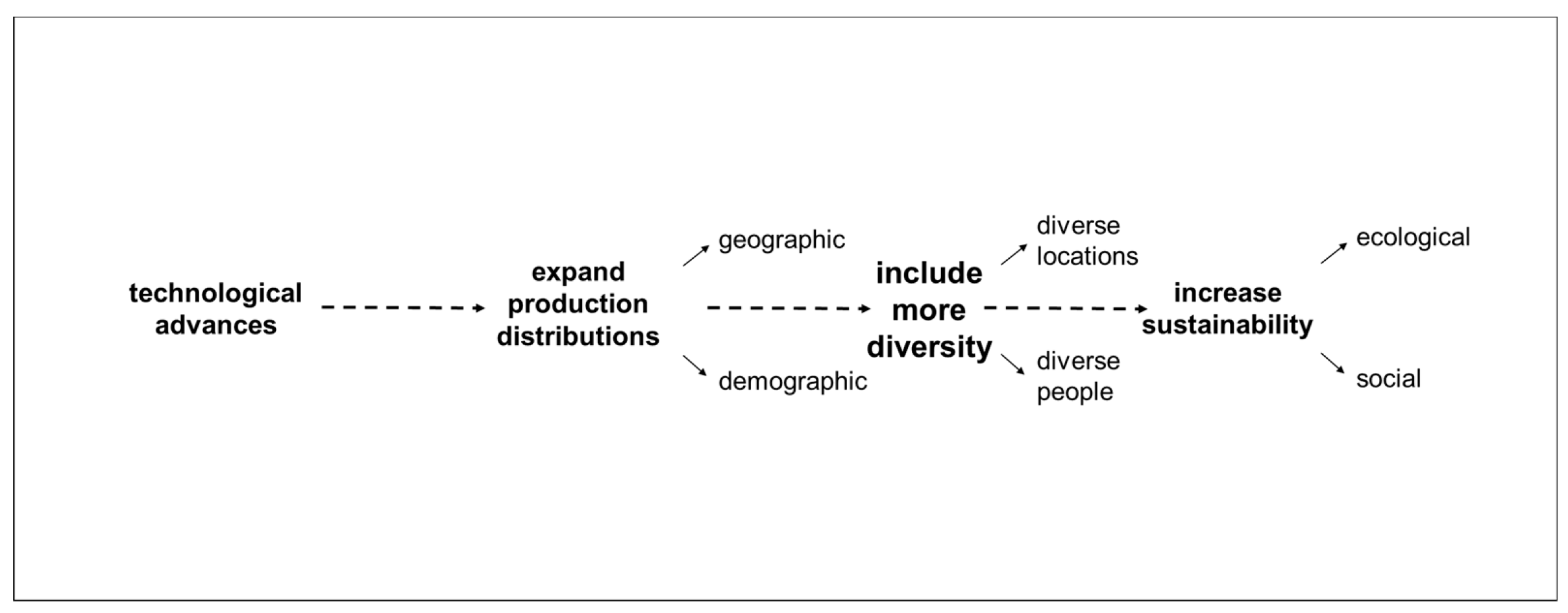
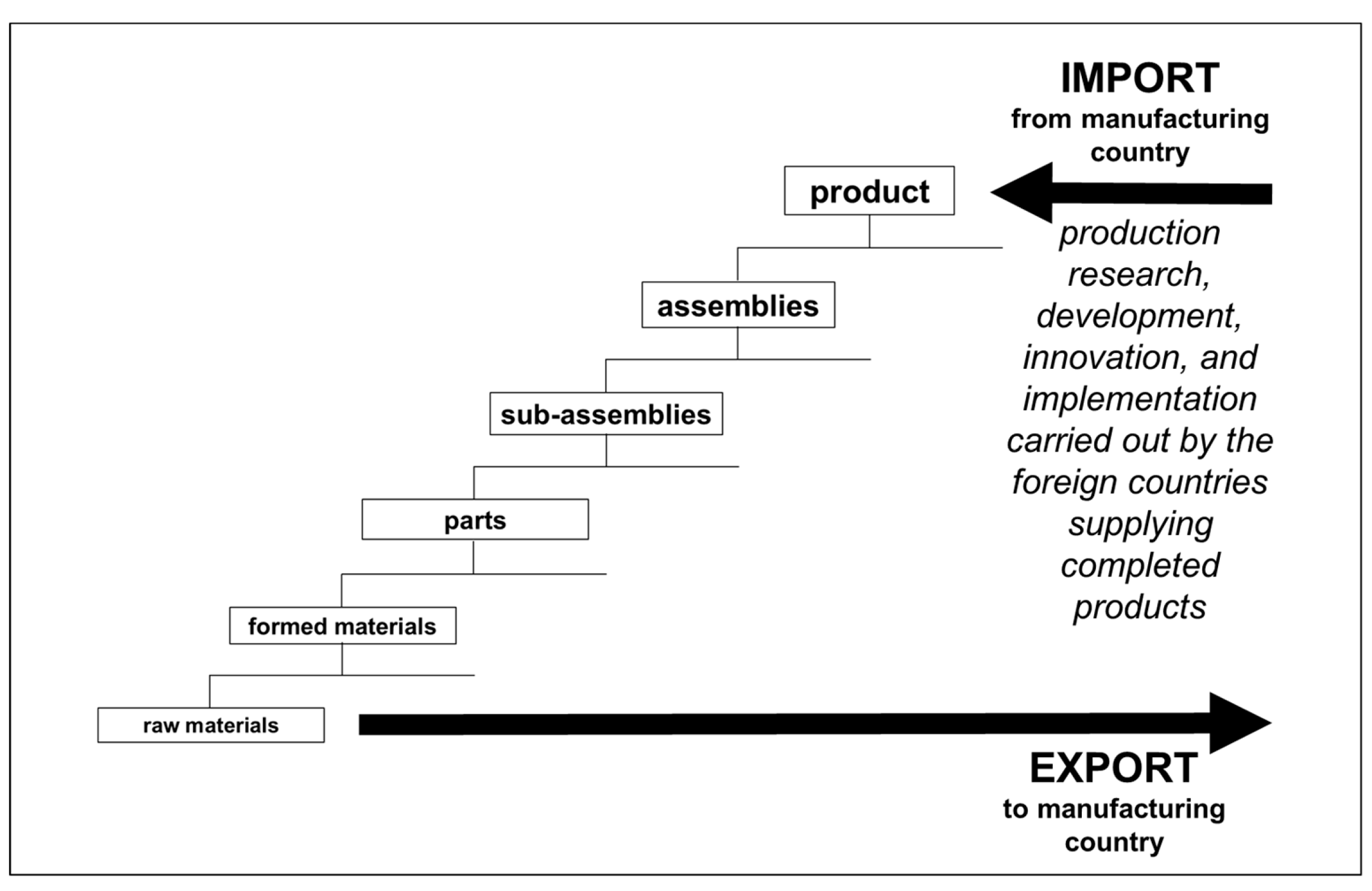
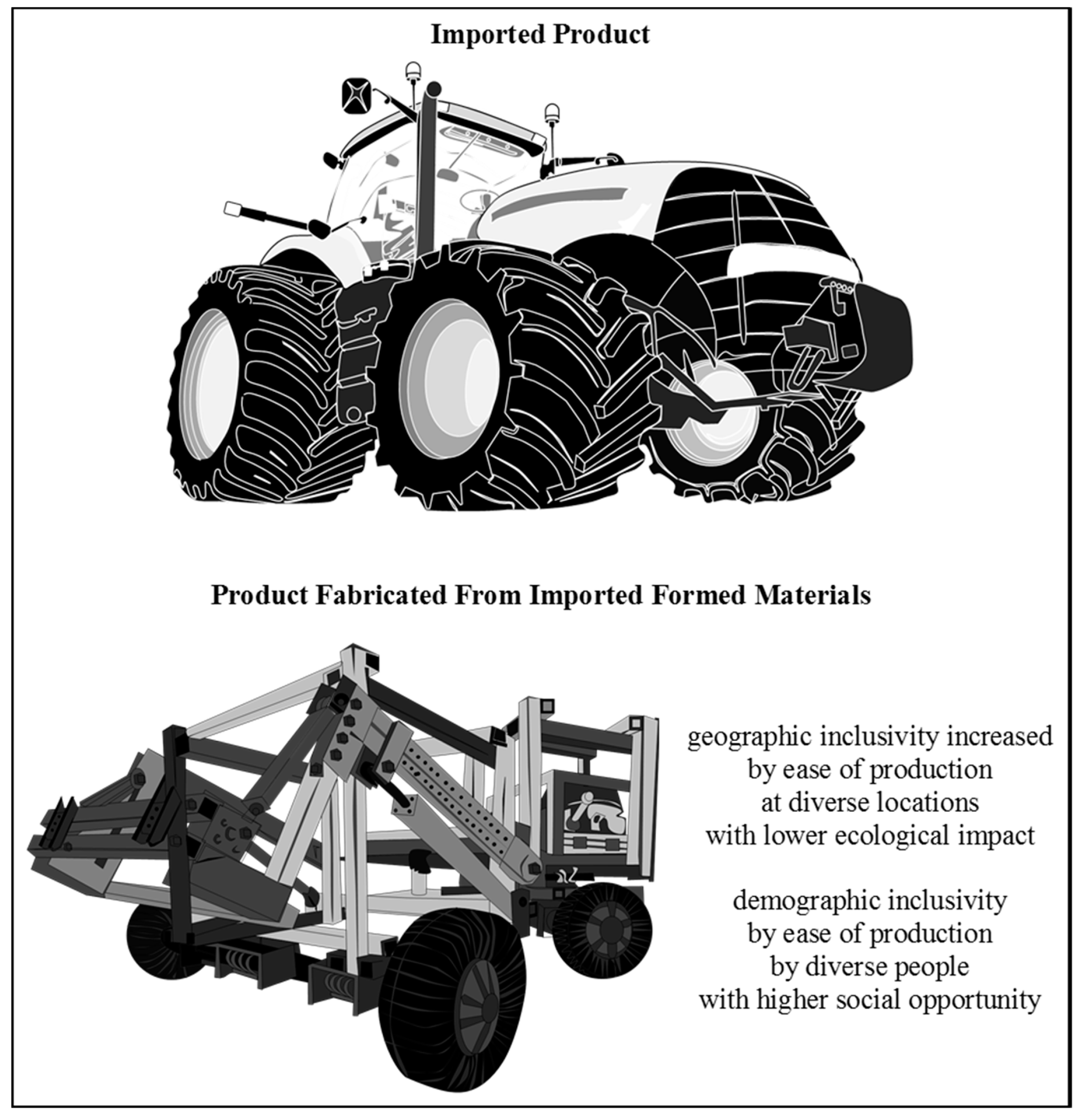
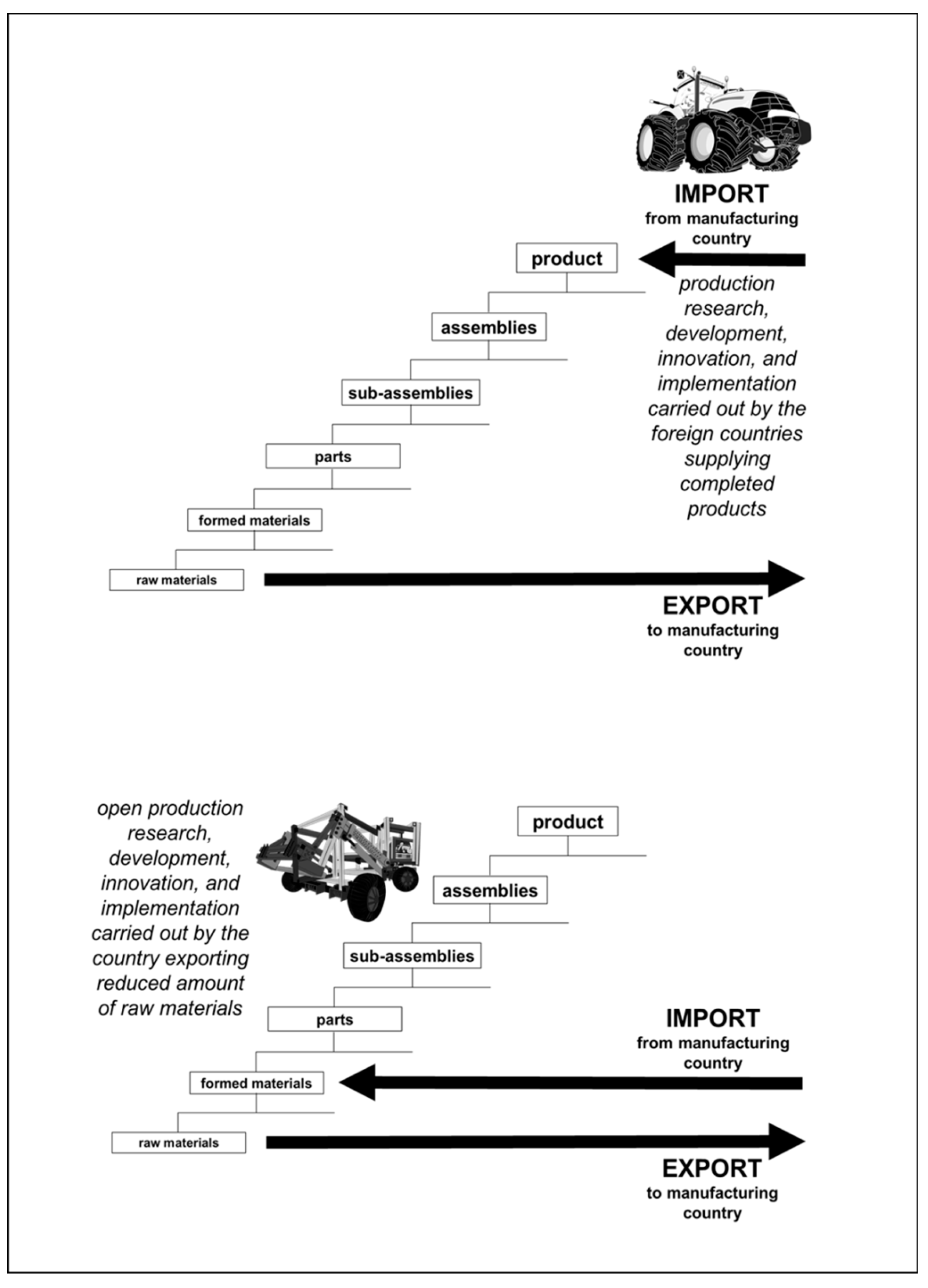

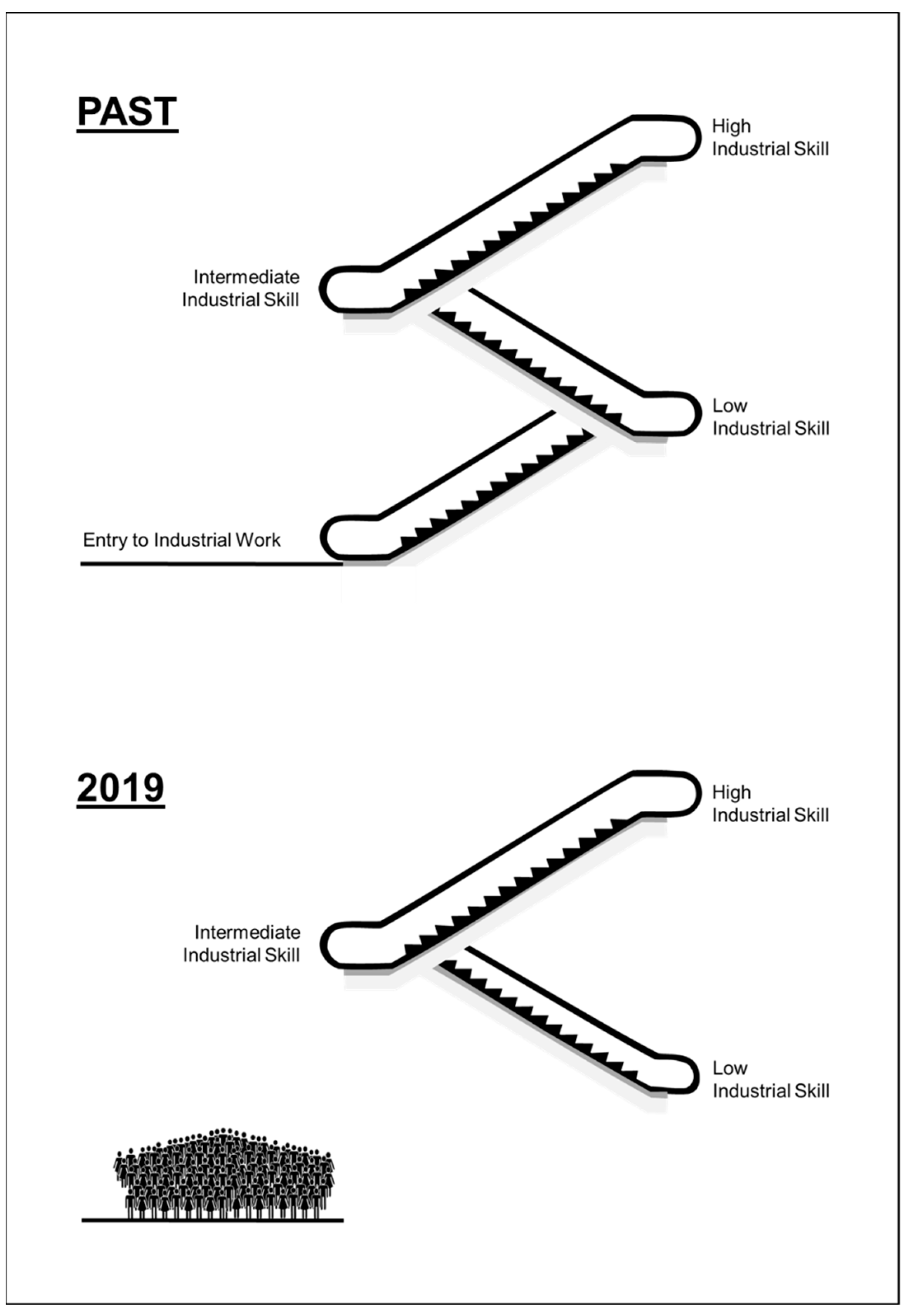
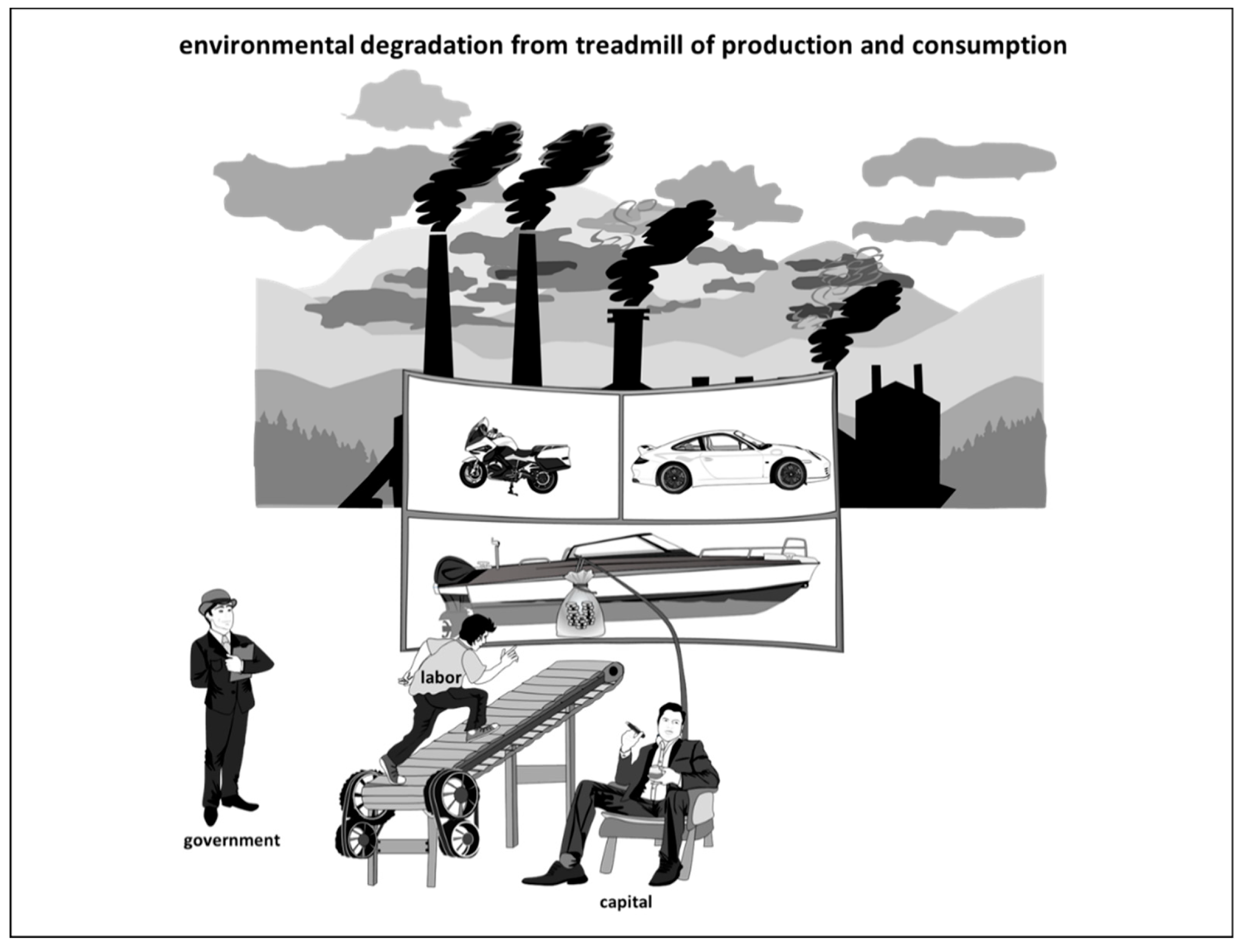
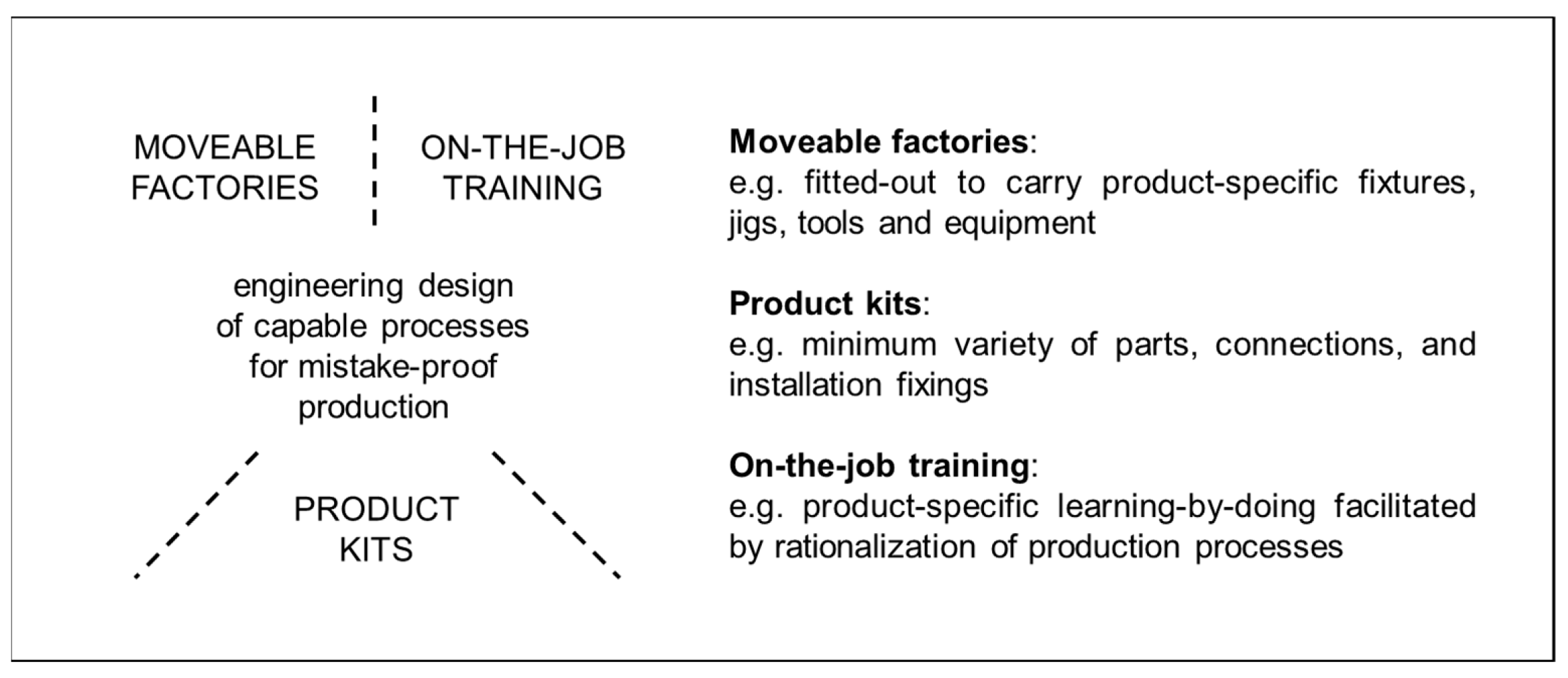
© 2019 by the author. Licensee MDPI, Basel, Switzerland. This article is an open access article distributed under the terms and conditions of the Creative Commons Attribution (CC BY) license (http://creativecommons.org/licenses/by/4.0/).
Share and Cite
Fox, S. Moveable Production Systems for Sustainable Development and Trade: Limitations, Opportunities and Barriers. Sustainability 2019, 11, 5154. https://doi.org/10.3390/su11195154
Fox S. Moveable Production Systems for Sustainable Development and Trade: Limitations, Opportunities and Barriers. Sustainability. 2019; 11(19):5154. https://doi.org/10.3390/su11195154
Chicago/Turabian StyleFox, Stephen. 2019. "Moveable Production Systems for Sustainable Development and Trade: Limitations, Opportunities and Barriers" Sustainability 11, no. 19: 5154. https://doi.org/10.3390/su11195154
APA StyleFox, S. (2019). Moveable Production Systems for Sustainable Development and Trade: Limitations, Opportunities and Barriers. Sustainability, 11(19), 5154. https://doi.org/10.3390/su11195154



